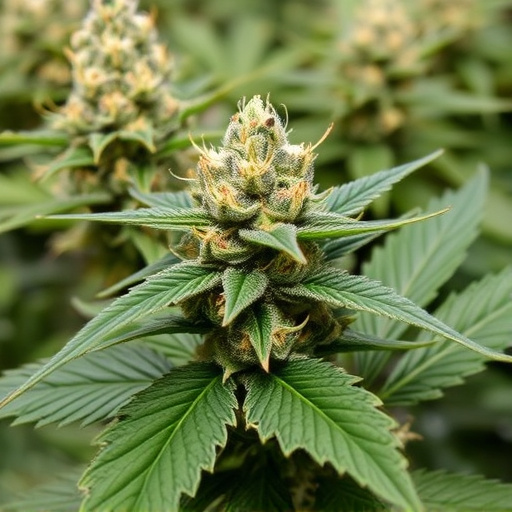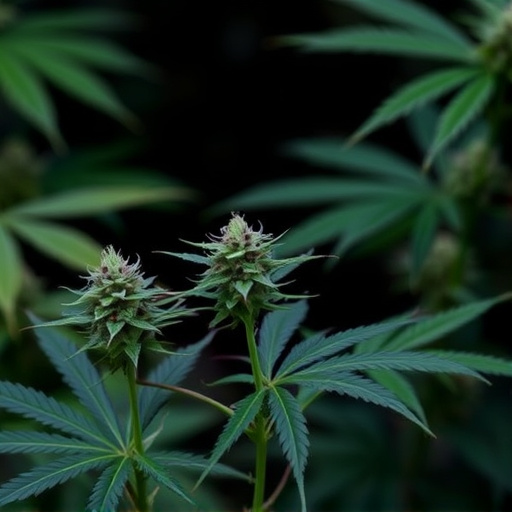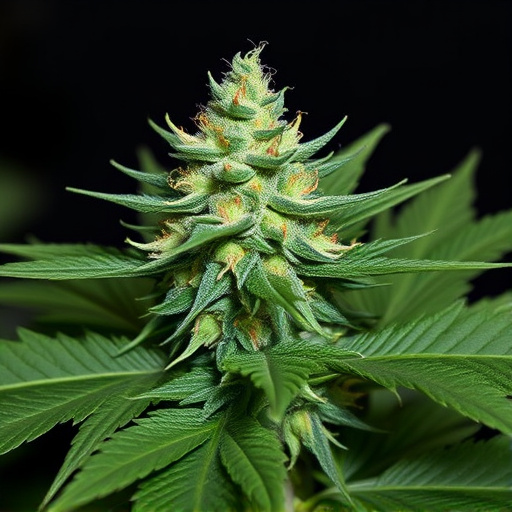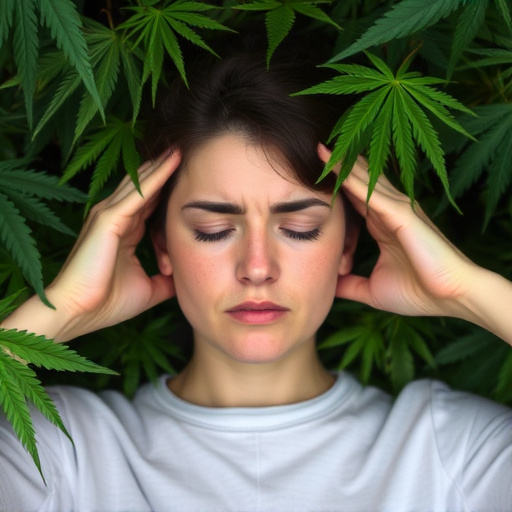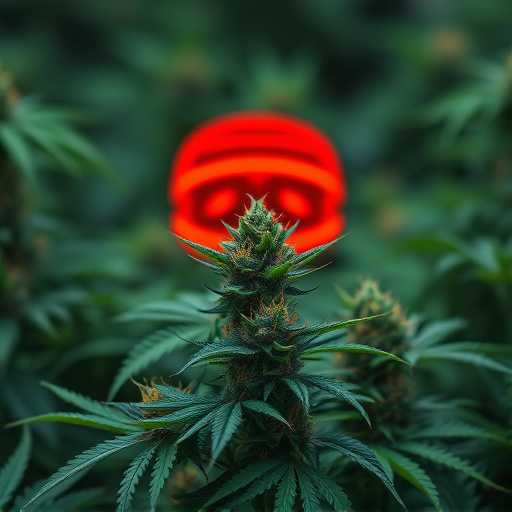The human body's endocannabinoid system (ECS) regulates vital processes like pain, mood, memory, and appetite. Cannabis interacts with this system through compounds like THC and CBD. While THC binds to brain receptors causing psychoactive effects, CBD modulates various ECS receptors involved in pain and inflammation. This interaction leads to diverse responses to cannabis strains, making personalized treatment essential for conditions like migraines. Strains high in CBD or with balanced CBD:THC ratios can offer relief by regulating the ECS, reducing migraine symptoms through anti-inflammatory and analgesic effects.
“Unraveling the enigma of why weed hits everyone differently is a complex dance. Cannabis interacts with our bodies through the intricate endocannabinoid system (ECS), which regulates numerous functions. Compounds like THC and CBD engage this system, leading to varied effects. Genetic predisposition plays a role too; metabolic differences influence how we process cannabis, impacting conditions like migraines.
Personal factors, including tolerance, mental state, and sensitivity to compounds, further customize the experience. Understanding these nuances is crucial for navigating the best cannabis strains for migraine relief, ensuring an effective yet personalized approach.”
- The Complex Interaction Between Cannabis and the Endocannabinoid System
- – Explanation of the endocannabinoid system (ECS) and its role in regulating various bodily functions
- – How cannabis compounds, particularly THC and CBD, interact with the ECS and their differing effects on individuals
The Complex Interaction Between Cannabis and the Endocannabinoid System
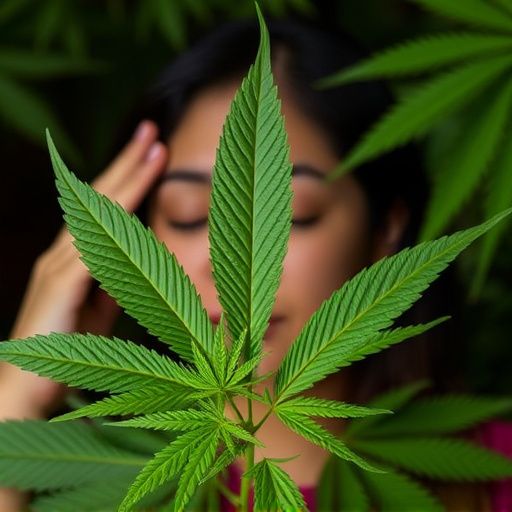
The human body has an intricate system known as the endocannabinoid system (ECS), which plays a pivotal role in regulating various physiological processes, including pain perception, mood, memory, and appetite. This system is designed to interact with cannabis compounds, making each individual’s response to the plant unique. Cannabis contains hundreds of chemical compounds, with tetrahydrocannabinol (THC) and cannabidiol (CBD) being the most well-known. THC primarily binds to the CB1 receptors in the brain, responsible for its psychoactive effects, while CBD interacts differently, affecting various receptors and ion channels involved in pain sensation and inflammation.
When someone consumes cannabis, especially specific strains known for their high CBD content or balanced CBD:THC ratios, these compounds can modulate the ECS. For instance, CBD has been studied for its potential in treating migraines, as it may help reduce inflammation and pain perception. The complex interaction between cannabis and the ECS explains why different people experience varying effects from the same strain. This individual response is a key factor to consider when exploring cannabis strains for specific conditions like migraines, ensuring a personalized approach to treatment and relief.
– Explanation of the endocannabinoid system (ECS) and its role in regulating various bodily functions

The endocannabinoid system (ECS) is a complex network within our bodies that plays a pivotal role in maintaining homeostasis, or balance, across various physiological functions. This intricate system was only discovered relatively recently, but it has since been recognized as a key regulator of pain perception, appetite, mood, memory, and even inflammation. The ECS achieves this by using endocannabinoids – neurotransmitters produced within the body – to bind with specific receptors, CB1 and CB2, which are found in our cells and tissues.
When someone consumes cannabis, particularly strains known for their high levels of THC (tetrahydrocannabinol), it interacts with this system. THC mimics endocannabinoids and binds to these receptors, potentially leading to the diverse range of effects experienced by individuals. This is why cannabis can be effective in treating conditions like migraines – the compounds within certain strains may help regulate overactive pain signals through the ECS. However, due to individual variations in both the ECS’s function and the way people metabolize THC, cannabis’s impact on migraines (and other effects) can greatly differ from person to person.
– How cannabis compounds, particularly THC and CBD, interact with the ECS and their differing effects on individuals

Cannabis compounds, like THC (tetrahydrocannabinol) and CBD (cannabidiol), interact with the Endocannabinoid System (ECS) in unique ways, leading to varied effects among individuals. The ECS is a complex network of receptors located throughout the body, playing a crucial role in maintaining homeostasis, or balance. THC primarily binds to CB1 receptors in the brain, triggering feelings of euphoria and altering perception, while also potentially alleviating pain and reducing anxiety for some users. However, its psychoactive properties can be intense, leading to paranoia or dizziness in others.
In contrast, CBD interacts with the ECS more subtly. It does not bind directly to CB1 receptors but instead influences their activity indirectly. This interaction often results in anti-inflammatory, anxiolytic (anxiety-reducing), and analgesic (pain-relieving) effects. For individuals seeking cannabis strains for migraines, CBD has been shown to be particularly effective due to its ability to reduce inflammation and ease headaches without the mental impairment associated with THC. The differing effects highlight the complex relationship between cannabis compounds and the human body, underscoring why the same strain can produce varied responses in different people.
Cannabis’ diverse effects on individuals are largely due to its complex interaction with our endocannabinoid system. While THC can induce euphoria, relaxation, or anxiety in different people, CBD’s anti-inflammatory properties offer potential relief for conditions like migraines. Understanding this intricate dance between cannabis compounds and our bodies allows us to make informed choices about which strains might best suit specific needs, ensuring a more personalized and beneficial experience with cannabis therapy.

